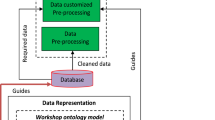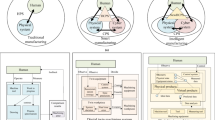Abstract
Elucidations of workers’ pouring motions and the resultant inflow behavior of molten alloy into the mold are important because the inflow behavior is well known to affect casting quality. Nevertheless, few reports in the relevant literature describe studies of inflow behavior effects on casting quality because of difficulty in measuring the worker’s pouring motion. Therefore, this study was conducted to examine worker’s pouring motions in the actual casting field and to describe the relation between the motion and casting defects. For that, an augmented reality (AR) marker-tracking method was used to conduct contactless measurements of the pouring motion. Validation of the method revealed that the error was less than 0.9° during roll motion from 0° to 90°. Subsequently, measurements of worker’s pouring motions were conducted during actual aluminum alloy casting. Results demonstrated that the method enabled the continuous acquisition of the translation (x, y, and z) and rotation (roll, pitch, and yaw) of the crucible during pouring with a usual pouring device and crucible. Finally, the AR marker-tracking method was capable of revealing the difference of the worker’s pouring motions corresponding to the occurrence or non-occurrence of a misrun defect during the gravity die casting. The obtained results demonstrated that the AR marker-tracking method can be used to measure the worker’s pouring motion. It can reveal relations between its motion and the casting defect.














Similar content being viewed by others
References
Campbell J (2015) Complete casting handbook, second edition. Butterworth-Heinemann, p 641
Gibbs S (2011) In search of the perfect pour. Mod Cast:36–39
Kermanpur A, Mahmoudi Sh, Hajipour A (2008) Numerical simulation of metal flow and solidification in the multi-cavity casting moulds of automotive components. 206(1–3):62–68
Zhang L, Low WQK, Belblidia F, Sienz J (2018) Uphill filling system for a bar-like casting. J Mater Process Technol 262:269–276
Tokunaga H, Motoyama Y, Okane T (2019) Particle method simulation for formation and flow of cold flakes in high-pressure die casting. Int J Met 13(4):897–904
Iwamoto K, Tokunaga H, Okane T (2014) Training support for pouring task in casting process using stereoscopic video see-through display presentation of molten metal flow simulation based on captured task motion, Proceedings of 2014 International Conference on Information Technology. Computer and Electrical Engineering (ICITACEE 2014) 131–136
Iwamoto K, Tokunaga H, Okane T (2015) An instruction method of 3D task motion with stereoscopic video see-through display and its application to pouring task, Proceedings of the Fifth IEEE International Conference on Control Systems, Computing and Engineering (ICCSCE2015)
Watanabe K, Hou L (2010) Augmented reality-based training system for metal casting. J Mech Sci Technol 24:237–240
Kato H, Billinghurst M (1999) Marker tracking and HMD calibration for a video-based augmented reality conferencing system. Second IEEE and ACM International Workshop on Augmented Reality, San Francisco, pp 85–94
Acknowledgments
The authors thank Dr. Tetsuyoshi Suzuki of the National Institute of Advanced Industrial Science and Technology (AIST) for his assistance during experiments.
Author information
Authors and Affiliations
Corresponding author
Additional information
Publisher’s note
Springer Nature remains neutral with regard to jurisdictional claims in published maps and institutional affiliations.
Rights and permissions
About this article
Cite this article
Motoyama, Y., Iwamoto, K., Tokunaga, H. et al. Measuring hand-pouring motion in casting process using augmented reality marker tracking. Int J Adv Manuf Technol 106, 5333–5343 (2020). https://doi.org/10.1007/s00170-020-04944-4
Received:
Accepted:
Published:
Issue Date:
DOI: https://doi.org/10.1007/s00170-020-04944-4




